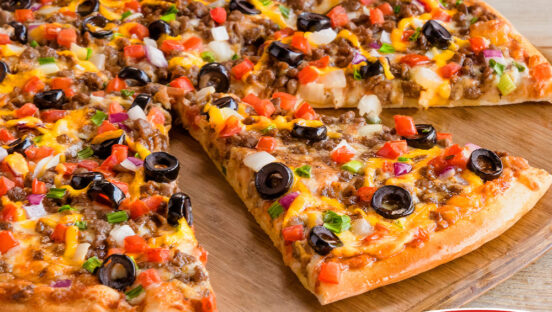When actor Paul Giamatti recently appeared on Jimmy Kimmel Live claiming New Haven-style apizza was the best pizza in the world, Kimmel made an astute observation.
“Don’t you think it’s true, though, that whatever pizza [style] you’re exposed to growing up is the pizza that, for the rest of your life, you think is the one?” Kimmel asked. Giamatti agreed—he was born and raised in New Haven, Connecticut, and his love for his hometown’s famous style of pizza followed.
This simple fact—that your favorite pizza style is wildly subjective and likely rooted in your own nostalgia and experiences—doesn’t stop anyone from arguing about which style is superior. Tasting Table food journalist Sara Klimek is the latest to post a pizza-style opinion online, wherein she ranked 14 different pizza styles from worst to best.
Related: New Best-Pizza-By-State List Teems With Culinary Creativity
“I would like to say that I have loved all pizza styles the same, but the fact of the matter is that there are just some slices that will never come close to the others,” she writes of the exercise. “I ranked some of the most popular pizza styles across the country based on the overall composition of the toppings, the qualities of the crust, and the overall eating experience.”
Klimek notes that her methodology is admittedly subjective, and her top priority when rating a pizza style is how much “balance” it brings to the table. Here’s how Klimek, who also happens to have been born-and-raised in Connecticut, ranked different pizza styles.
14. Altoona-style pizza

The list—which, as a reminder, begins with Klimek’s least favorite style and then proceeds toward her favorite—starts off with Altoona-style pizza. The style seems to hardly be widespread, PMQ recently found, with possibly just one deli serving the style. That doesn’t mean it isn’t famous—or infamous, depending on how you look at it—due to the highly unusual fact that Altoona-style pizza’s trademark is a slice of Yellow American cheese melted atop it.
Related: Is Altoona-style Pizza Really a Thing?
“Honestly, this pizza lost any ounce of respect from me when someone decided to choose the tar-like, [fluorescent] yellow cheese over perfectly good mozzarella,” Klimek writes. “I liken this style more to an open-face grilled cheese that’s just ‘going through a phase.’
“Besides the horrors beneath its cheese coating, I just can’t get over this style’s size,” Klimek’s barrage continued. “It’s weighty and massive, and I can’t imagine myself scarfing it down to cure a hangover. Luckily for the general population, you will likely not get your hands on a piece unless you travel to Altoona.”
13. St. Louis-style pizza
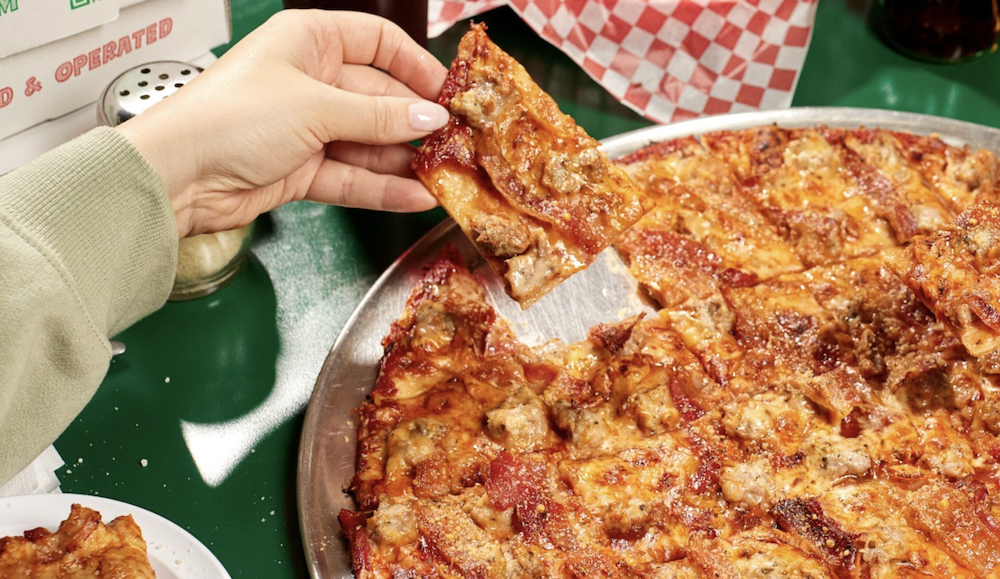
St. Louis-style pizza is famous for its cracker-thin crust, “sauced to the edge.” The famous thin crust just so happens to be the exact thing Klimek takes the most issue with and appears to be the reason she ranks St. Louis-style pizza so low.
“With a crust this thin, you’re bound to have structural issues unless you cook it to the absolute driest it can be without making it inedible,” Klimek writes. “The other issue I have with this pizza is the regionally specific blend of cheeses it’s baked with. Provel cheese is a staple for St. Louis-style pizza — and like the lowest-ranking pizza style, there’s not an ounce of mozzarella in sight. Instead, eaters of this pizza win the grand prize of eating a confused, melted cheese cracker topped with Swiss, provolone, and cheddar.”
12. Pizazz
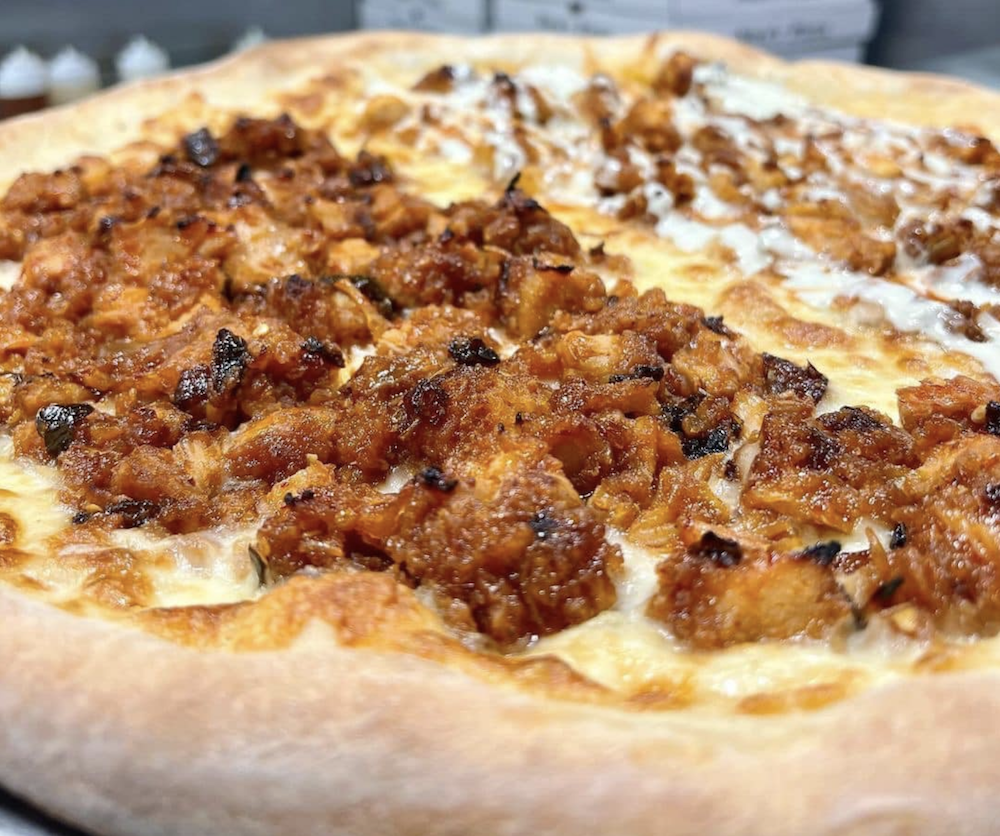
If you’ve never heard of the pizza style “pizazz” before, you aren’t alone. We polled the PMQ staff: Nobody had heard of it.
Pizazz is a staple in South Philadelphia, according to Klimek. Like Altoona-style pizza, the pies are made with American cheese and appear to be missing a crucial element, in Klimek’s estimation.
“But the cheese isn’t the biggest complaint I have with it,” Klimek writes. “Rather, this style of pizza is missing a sauce, which makes me question why anyone would still feel confident calling it a pizza.”
11. Colorado-style pizza
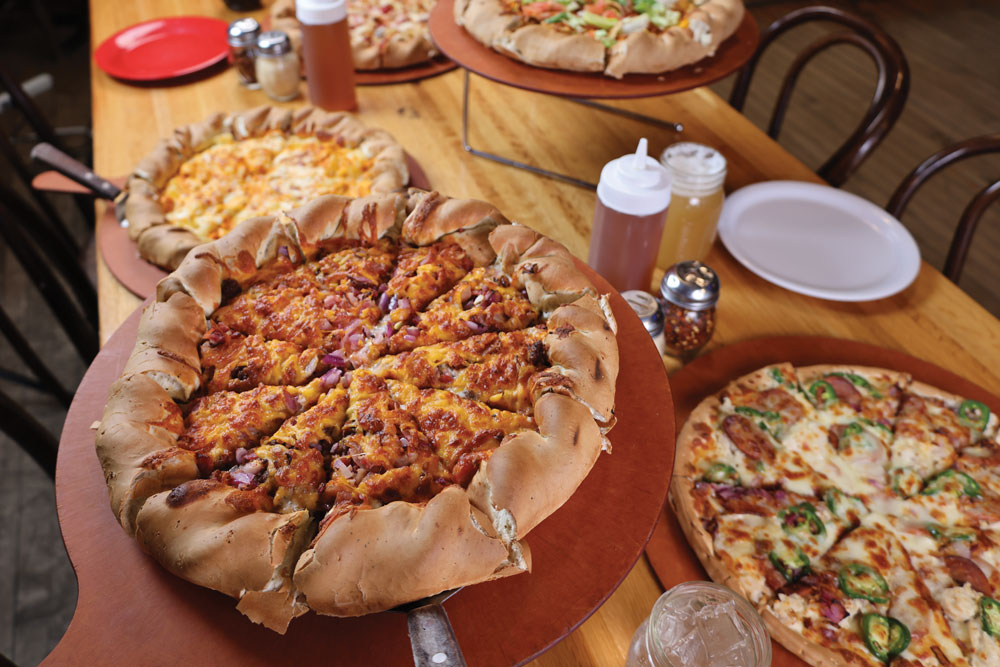
Colorado-style pizza is another style that seems to be made at exactly one pizzeria across the country. Colorado-style pizza—or Colorado Mountain Pie—is served at Beau Jo’s in Idaho Springs, Colorado, and is distinguished by an enormous crust said to be a nod to the Colorado mountains. The pies are served with a side of honey for dipping and drizzling—and honey is said to be an ingredient in the dough as well.
Related: Why Colorado Pizza Lovers Are So High on the Rocky Mountain Pie
“The crust is overwhelming and throws the entire pizza out of balance,” Klimek writes. “And while I like the idea of drizzling honey on my pie as a thoughtful touch, the pies at Beau Jo’s are nothing short of excessive. This isn’t a slice I could enjoy without needing to have a nap on the couch after.”
10. New England-style Greek pizza
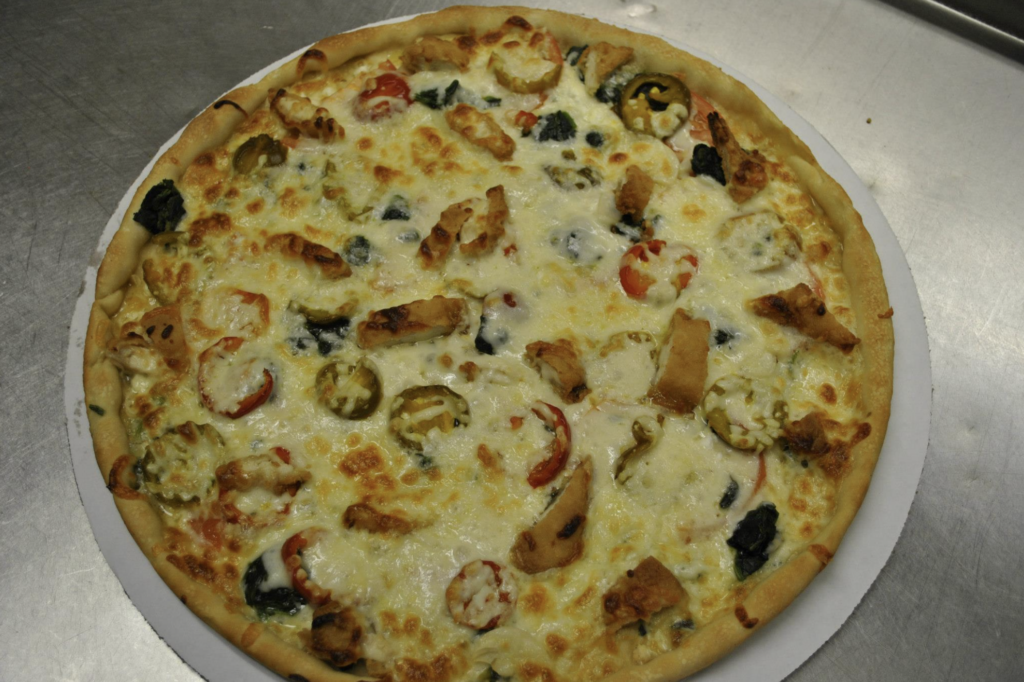
Next on Klimek’s list is a style often found in Massachusetts and Northern New England: Greek-style pizza. These pizzas are baked in dishes and consist of a doughy, bread-like crust. Cheeses used, according to Klimek, are mozzarella, provolone and cheddar.
“There is also often a fair amount of cheese on every pie, which makes it very weighty and overwhelming to eat,” Klimek writes. “It’s also extra crispy, thanks to an extra coating of olive oil on every surface. But the worst thing about Greek pizza is that the crust is often bent upwards to create a little dish, which really makes for a bready bite that, besides being crisp, lacks flavor.”
9. Philadelphia tomato pie

The Philadelphia tomato pie is one of the most unique styles in the country. It is made with a focaccia-like bread and tomato sauce and often served at room temperature by bakeries in Philly.
“While I can appreciate a good tomato pie from time to time, the issue here is that the density of the crust causes this pie to get so wet under the weight of the sauce,” Klimek writes. “You wouldn’t have the same problem if you were working with a thin-crust, apizza-style tomato pie.”
8. California-style pizza
As Klimek notes, California-style pizza “embodies the California casual aesthetic,” typically made on a yeast-leavened crust. The crust often has the blistering characteristics of a Neapolitan pie, served with locally sourced ingredients. Klimek actually calls California-style pies “too fresh” for her tastes.
“It won’t satisfy the late-night craving for a greasy cheese slice like my top pizza styles, but it will fit the bill if I’m looking for a light, avant-garde version of an Italian classic,” she writes.
7. Chicago-style deep-dish pizza

Halfway through the list, we’ve arrived at one of the most famous U.S. pizza styles. A common misconception about Chicago-style deep-dish pizza is that it’s the most prevalent style in the Windy City—it’s actually thin-crust tavern-style pies that dominate the city as far as locals are concerned. It’s an iconic style nonetheless—it just happens to be a style that Klimek is rather “meh” on.
Related: The Weird and Bewildering Story Behind Chicago Deep-Dish Pizza
“The ratio of toppings to crust in a deep-dish pizza is better than that in a Philly tomato pie, which earns it a middle spot in the ranking,” Klimek writes. “Plus, the pie uses the ‘right’ kind of cheese (mozzarella) rather than trying to throw whatever cheese is hanging around in the back of the walk-in refrigerator into it. Its biggest drawback is its abstractness; it’s not the greasy pie I want to indulge in because it really doesn’t have the true qualities of a pizza.”
6. Grandma pie
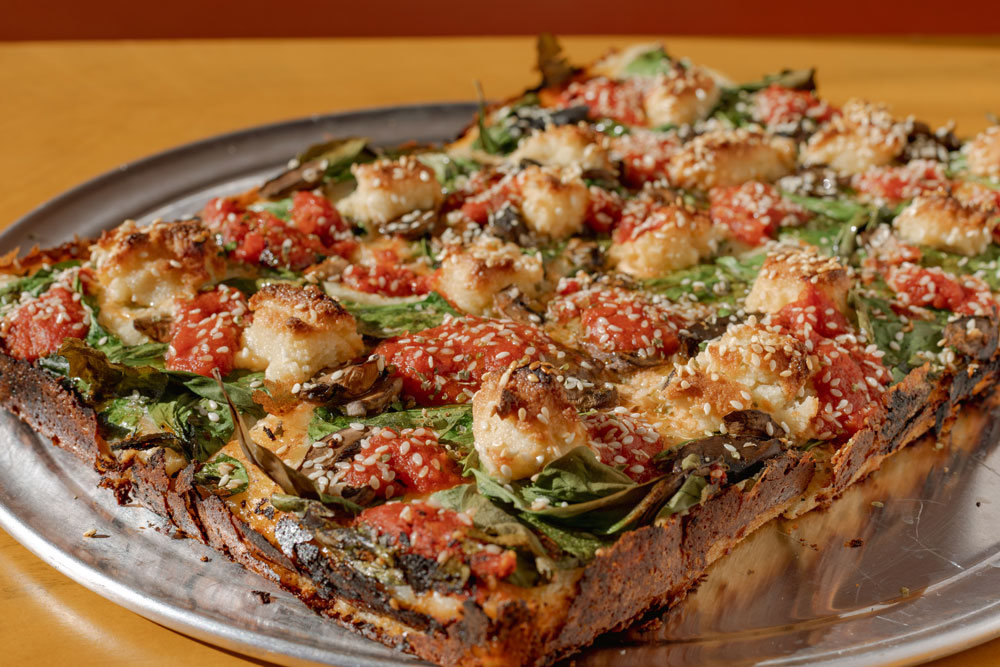
Klimek’s list heads back to the Northeast with the Grandma Pie, a Long Island specialty. Whether or not the Grandma Pie is a style unto itself is a matter of debate, but Klimek states a compelling case for it:
“It essentially takes Sicilian-style pizza and turns it on its head,” she writes. “Although the shape of the grandma pie is the same as the former, it isn’t allowed to rise like a normal, fluffy Sicilian. The pie is also baked on a thin cookie sheet, so it doesn’t have nearly the same thickness as other square pies included in this roundup.”
The style draws above average marks from Klimek, though she knocks it a bit for reminding her of “a pizza I would get from a school cafeteria.”
5. Buffalo-style pizza

Buffalo-style pizza exhibits how diverse the pizza scene in New York state is. As Klimek points out, Buffalo-style pizza seems to borrow from both New York City-style and Detroit-style pizza. The style is notable for the toppings—typically oodles of cheese and cup-and-char pepperoni— that spill over the edges of the crust.
Related: Why Buffalo-style Pizza Should Be at the Top of Every Pizza Nerd’s Bucket List
“This pie takes cheese to a new level; it can use upwards of three times as much cheese as a standard NYC slice,” Klimek writes. “There’s also much more sauce than a conventional city slice, which makes for a heavy pizza that cheese lovers adore.”
4. Detroit-style pizza

At last, the list arrives at some heavy hitters, like the aforementioned Detroit-style pizza, which seems to be increasingly infiltrating the U.S. pizza scene at all corners of the map.
Related: 8 Facts You Must Know About Detroit-Style Pizza
The pizza earns high marks from Klimek, who likes the “perfectly crackly and airy” nature of the style. She does note that Detroit-style pizza can be messy and difficult to replicate at home, however.
3. Neapolitan pizza

No list of ranking of pizza styles would be complete without the original: Neapolitan style. Klimek appreciates the “simplicity and craftsmanship” of Neapolitan-style pizza, but also leaves a hint as to why she does not have it ranked in the number one spot (aside from the fact that she is from Connecticut): “There comes a point where there needs to be a bit more going on,” she writes.
2. New York-style pizza
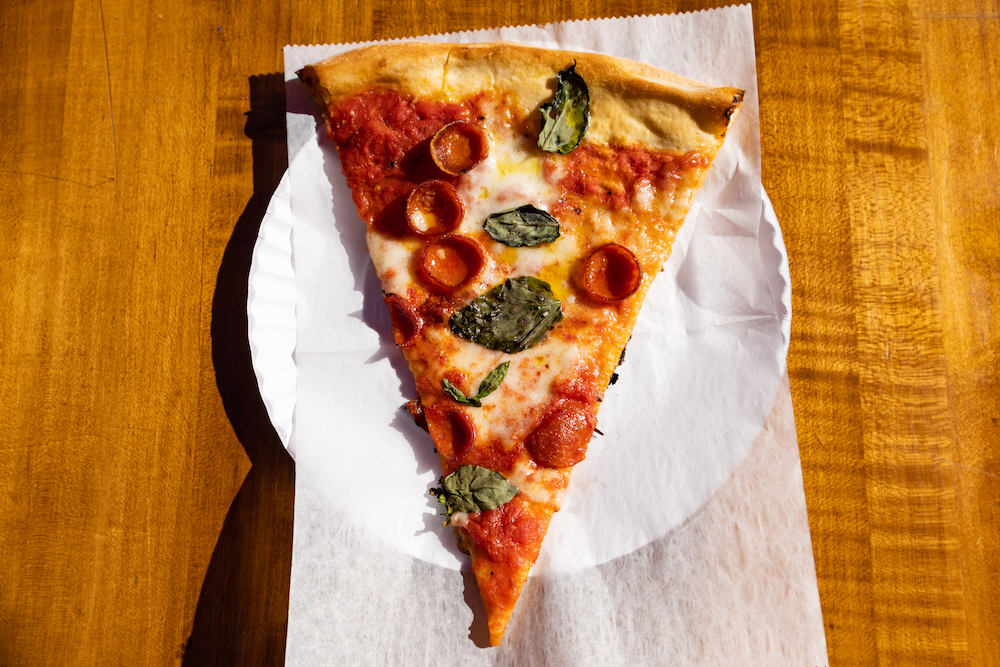
If Neapolitan is the original style of pizza, most Americans still think of New York-style pizza as the standard bearer. Klimek appears to share that view—for the most part.
“I love a greasy slice of New York pizza and would argue that it’s best eaten cold from the fridge on day two,” Klimek says. “There is a fantastic balance of crust to cheese, and there are endless toppings that you can adorn your slice with without straying too far from the quintessential New York slice. But my only issue with this pizza is that it’s rarely crispy on the bottom, so each slice has to be held and enjoyed with two hands. Luckily, my top pick solves that problem.”
1. New Haven apizza
Related: Is New Haven-Style Apizza Set to Explode?

No surprises here: The self-proclaimed “Nutmegger” loves New Haven-style apizza. Klimek appreciates all aspects of the style, from the crispy crust to the subtly tart sauce that brings balance to the pies. Klimek even anticipates what the haters might say about her ranking New Haven apizza number one:
“Naysayers will surely chime in with, ‘But it’s burnt!’” Klimek writes. “And first of all, it’s charred crust—not burnt. If you’re going to be accusatory, at least get your facts straight. This crispy hot-spot effect just adds to the overall experience of eating a New Haven-style pie. You get the sooty flavor on the tip of your tongue, along with the sloshing oil that sits atop a perfectly baked pie. Unlike the lower-ranked pies, you won’t have to worry about an apizza (at least, a properly baked one) coming out soggy, and the toppings are always spread out to the edge of the pie. It can’t get much better than that.”



